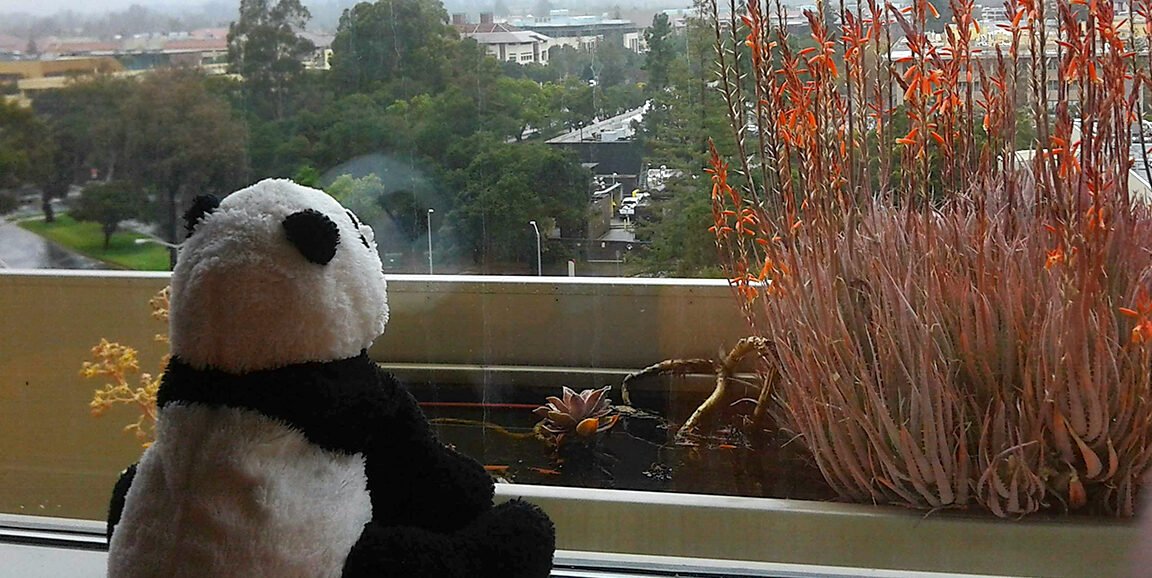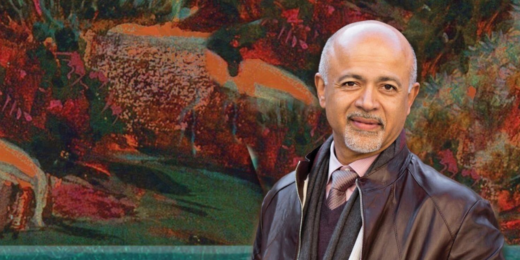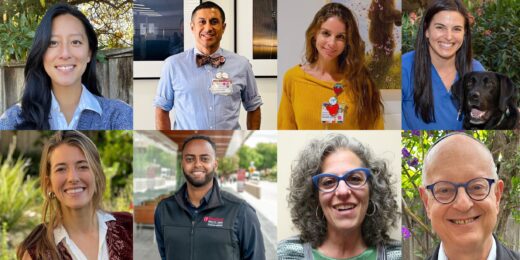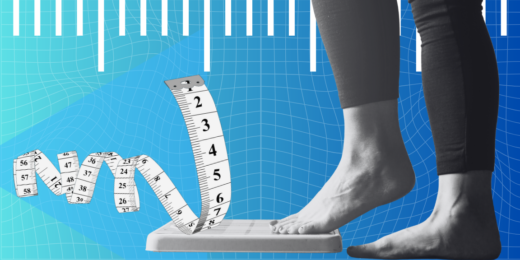When Tianna Williams was asked to choose a favorite photo from her family's time at Lucile Packard Children's Hospital Stanford, she selected one of her toddler, Armaneigh, receiving a medical scan as she awaits a heart transplant.
"Armaneigh was being difficult here," Williams told the audience at an April 26 photo exhibit on the Stanford University campus. The exhibit was the culmination of a project called "Through Their Eyes" in which patients and families at Packard Children's snapped photos that captured their experience at the hospital. In the photo of Armaneigh undergoing an echocardiogram, a technician takes ultrasound images of Armaneigh's heart while the little girl stretches her right arm up as far as she can reach.
"As you can see, she's trying to hit the ultrasound technician," Williams said, to chuckles from the audience.
The "Through Their Eyes" project ran for 10 months and was led by a team of 11 graduate students from different disciplines, all of whom are enrolled in Stanford University's Knight-Hennessy Scholars program. During the project, Packard Children's patients and their families used cameras to document key aspects of their hospital experiences, and the graduate students interviewed them about the significance of their favorite images. The exhibit displayed selected images and accompanying text from participants' interviews. Three participants, including Williams, spoke about their photographs.
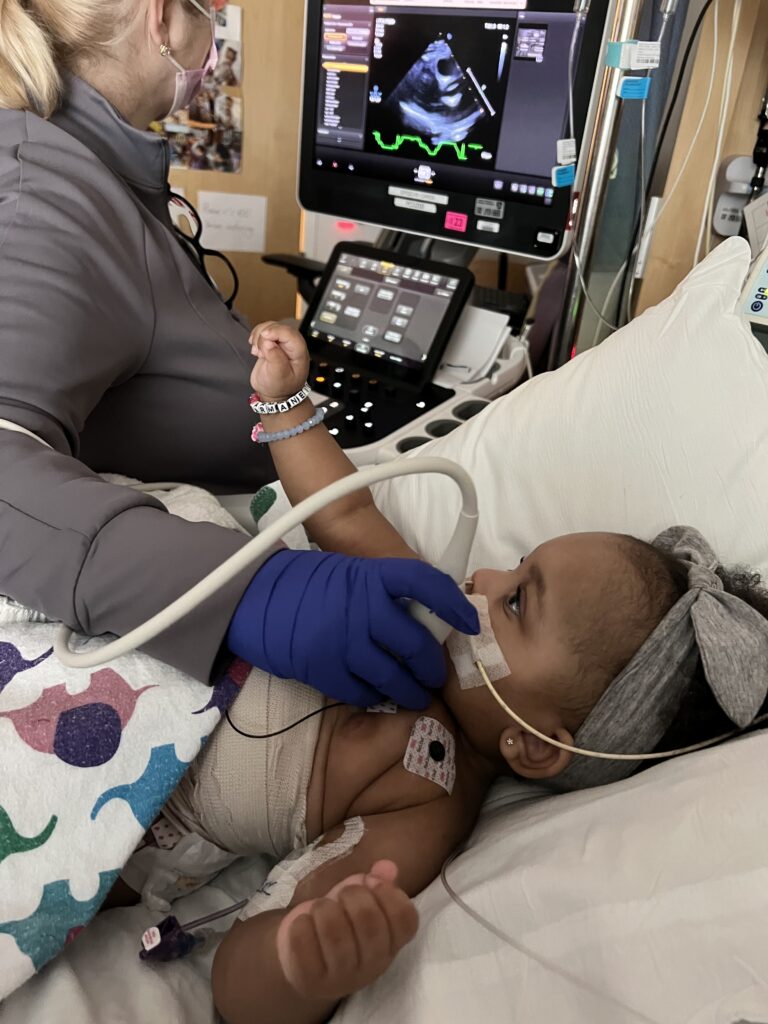
Like most 17-month-olds, Armaneigh dislikes holding still for medical procedures. She's no fan of slimy ultrasound gel, either. "The photo was meant to show a day in the life of what she goes through," Williams said, adding that Armaneigh has been hospitalized for the last eight months, hooked to a cardiac pump called a ventricular assist device that keeps her alive while she awaits a donor heart. Armaneigh needs a transplant because she has dilated cardiomyopathy, a condition in which the heart muscle becomes abnormally enlarged and weakened.
Capturing the emotional nuances of families' medical experiences was exactly what the students who started the photo project were hoping to do.
"I've always been someone who has loved storytelling, and as a medical student, I have realized that a lot of the stories we learn about patients are told by people who are not the patient," said Niisoja Torto, a Knight-Hennessy Scholar and a second-year student at the Stanford School of Medicine, who helped lead the project.
Each year, students in the Knight-Hennessy Scholars program conduct "KHestyone projects" that focus on a variety of important issues such as climate change, health care advocacy and criminal justice reform. For this project, Torto and his fellow scholars wanted to find a way for young patients and their families to share aspects of the medical experience not captured by traditional methods, such as electronic medical records or physicians' rounds. "We thought photography would be a good means," he said.
How it worked
Each of the 12 participating families borrowed a camera to document their stays. (The graduate students collaborated with Child Life specialists at Packard Children's, whose job includes leading activities that help patients feel like regular kids while they are hospitalized, to identify families to take part in the photo project.) Patients who were at least 4 years old, as well as parents of all patients, took photos. Most of the participants were hospitalized for long stretches because of complex conditions such as cancer or heart or lung disease, or they returned to the hospital frequently, such as for kidney dialysis.
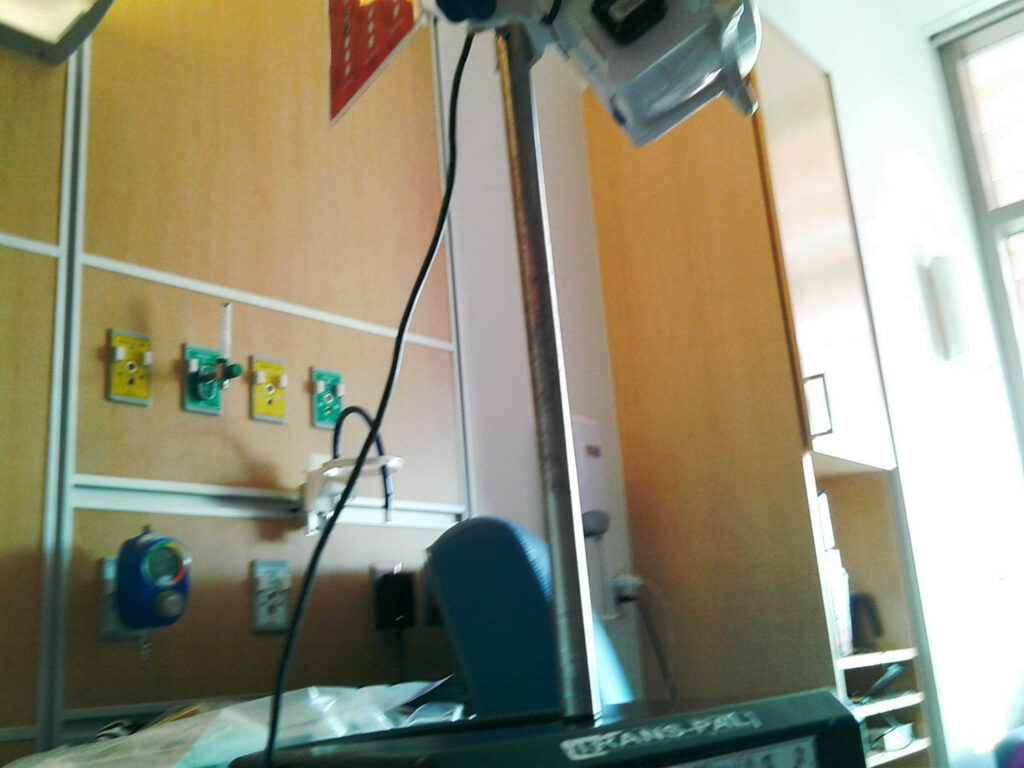
Torto said that interviewing participants about their favorite photos reminded him that patients may have strong feelings about experiences that are overlooked by medical caregivers. For instance, when he interviewed a 15-year-old participant shortly before she was discharged from the hospital, he was initially puzzled by one photo she'd deemed meaningful. To him, it didn't look like much.
The patient explained that the subject of the photo is her empty IV pole - emphasis on empty.
"When she first arrived [at the hospital], the pole was full of machines delivering all these medications, helping keep her alive," Torto said. "Taking this photo of the absence of those machines symbolized how far she had come."
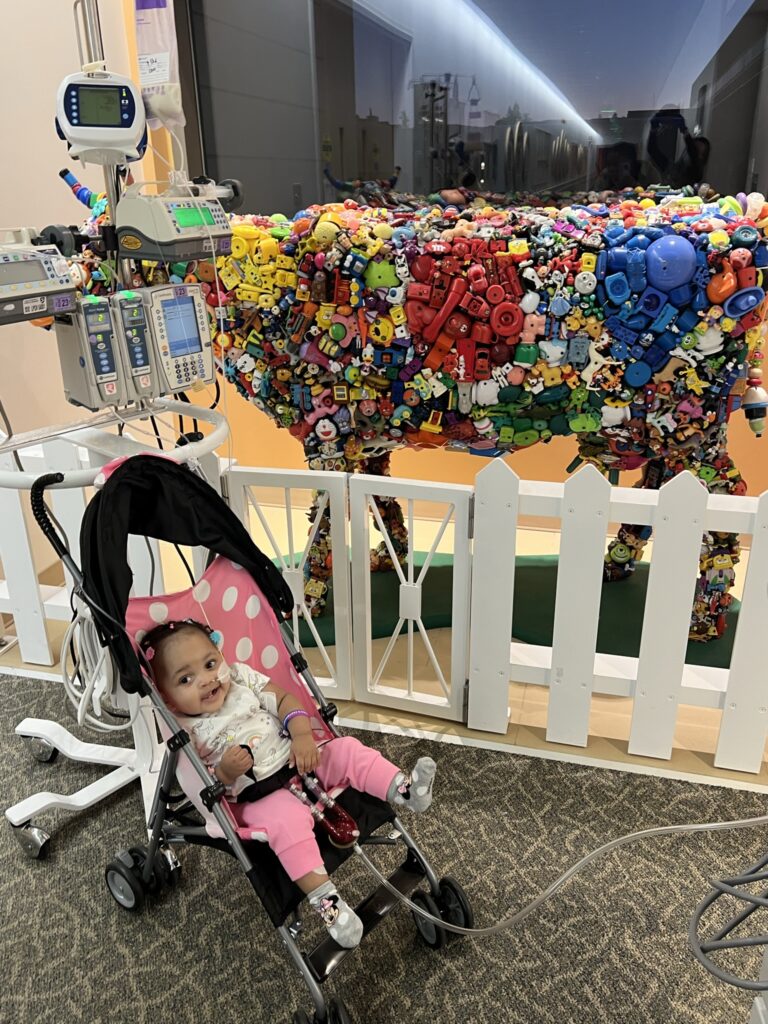
At the April 26 exhibit, in addition to the photo of the echocardiogram, Williams spoke about a photo of Armaneigh grinning broadly as she sits next to her favorite piece of hospital artwork, a life-sized sculpture of a cow. Because of the ventricular assist device, Armaniegh can't leave the hospital; the longest the device can be unplugged from the wall is 30 minutes. But that's enough time for Williams and her daughter to take short jaunts around the hospital, with stops to admire the art.
"She likes to scream and yell at the cow," Williams said, adding that she'd chosen the photo "because it shows her personality, how happy she is all the time."
Williams, who has stayed in the hospital with her daughter throughout the last eight months, added that Armaneigh's cheerfulness buoys her during moments when the wait seems daunting.
Healing, through kids' eyes
The mood at the exhibit was celebratory: Guests enjoyed dinner; music played in the background; people admired the photographs and milled about, chatting. Gabriel, a 4-year-old boy whose mom took a photo of his favorite stuffed panda bear looking out their hospital room's window, twirled joyfully around the room with the same bear, whose name is Baboo. (Technically, said Gabriel's mom, Jocelyn, the bear is named Bamboo, but when Gabriel was smaller, he couldn't pronounce the name quite right.)
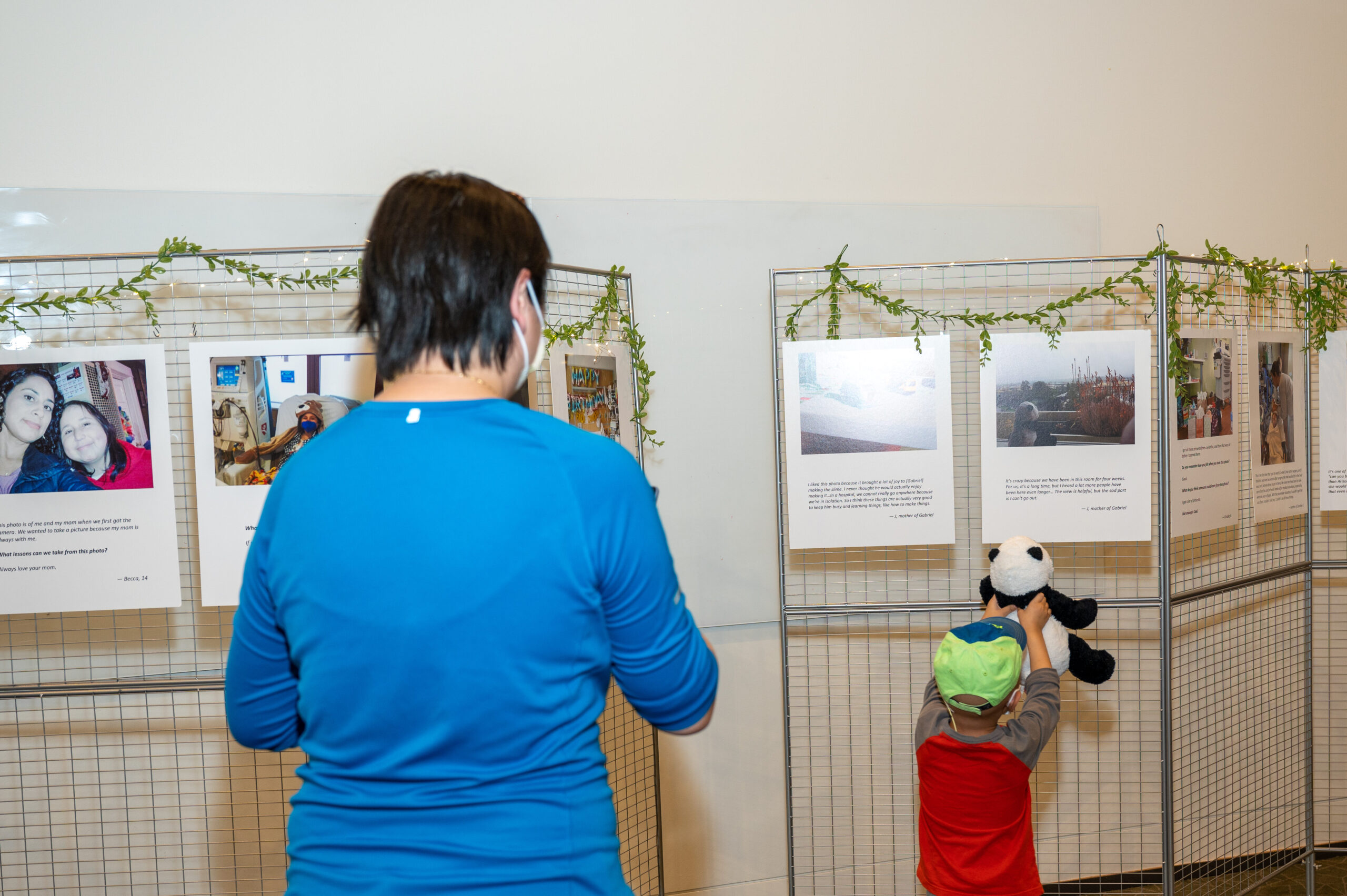
Gabriel is now overflowing with energy. Baboo seems to have a lot of energy, too. According to Gabriel, Baboo likes to spin, get dizzy and do flips.
Medical student Freja Ekman interviewed 11-year-old Julyanna and her mom, Carmen, about their time in the hospital. They participated in the photo project from July to October, 2022, when Julyanna was hospitalized for a heart transplant to treat dilated cardiomyopathy. She received her transplant July 17 and stayed in the hospital for about three months to recover.
Carmen explained that when Julyanna's heart failed, it came as a shock. "She's so used to being active," Carmen said. "The day before she got diagnosed, she was swimming and playing tackle football with her friends."
Julyanna was fortunate to be matched with a donor heart quickly, waiting just over two weeks, but her recovery from transplant was challenging. Along the way, she took dozens of photos for the project.
"I thought it would be something good to get my mind off the surgery stuff and the medicine-taking," Julyanna said.
Ekman asked Julyanna to talk about the photo she had selected as her favorite. It's a view down a flight of orange-outlined hospital stairs. At the bottom, the front wheels of a wheelchair are barely visible.

"This was the day I got discharged for the first time," Julyanna told the audience. She took the photo after climbing those stairs without assistance, an important milestone in regaining her fitness after the transplant.
"It was something I had to do before I got to go home, because I have stairs to get into my house," she said. "I'm really proud of the moment when I made it up."
She hopes other kids will be inspired by the photo. When Ekman asked what message she'd like others to take from it, Julyanna didn't hesitate.
"You can do anything you put your mind to," she said confidently.
The photo project is still accepting new participants. Families of Packard Children's patients who wish to take part can contact pediatricphotoproject@lists.stanford.edu for more information.
Photo by Gabriel


